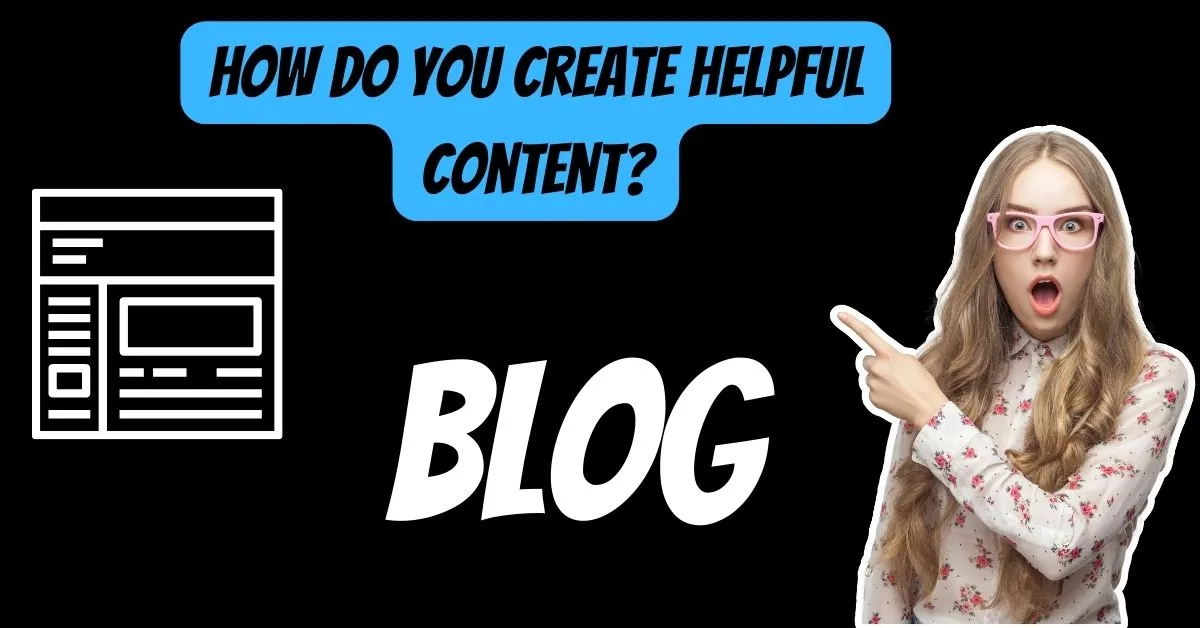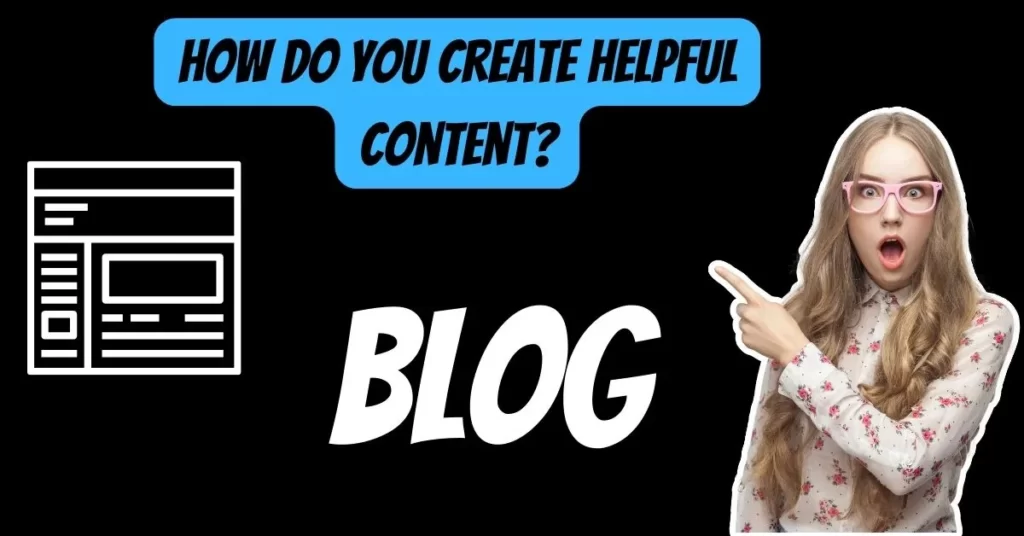
Creating helpful content involves understanding your audience, conducting thorough research, and presenting information clearly and engagingly. It begins by knowing who your target audience is, their interests, and what they need. This helps you tailor your content to their specific requirements.
Using simple language ensures that your audience can easily understand your message. Providing reliable information supported by evidence and examples builds credibility. Enhancing your content with visual aids like images or videos makes it more visually appealing and easier to comprehend.
Incorporating storytelling techniques and real-life examples adds a personal touch, making your content relatable and memorable.
Additionally, actively listen to audience feedback to continuously improve your content. By following these principles, we will learn How to create helpful content.
Table of Contents
Understanding Your Audience
Identifying your target audience

Identifying your target audience is crucial for the success of any marketing or communication strategy. Your target audience refers to the specific group of people or individuals who are most likely to be interested in your product, service, or message.
By understanding your target audience, you can tailor your marketing efforts to effectively reach and engage them. Here are some key steps to identify your target audience:
Define your product/service
Start by clearly defining what your product or service offers and its unique selling points. Understand the key features, benefits, and value it provides to customers.
Analyze existing customers
Look at your current customer base and gather demographic information such as age, gender, location, income level, education, and occupation. This analysis helps you identify patterns and characteristics shared by your existing customers.
Conduct market research
Perform market research to gain insights into the broader market and potential customer segments. This can include analyzing industry reports, conducting surveys, or using data analytics tools to understand market trends, preferences, and behaviors.
Identify customer needs
Determine the needs, challenges, or pain points your product or service addresses. This helps you understand the specific problems your target audience is looking to solve.
Consider psychographic factors
Apart from demographics, consider psychographic factors such as lifestyle, interests, values, attitudes, and behaviors. These factors provide deeper insights into the motivations and preferences of your target audience.
Conducting audience research
Audience research involves gathering information and insights about your target audience to understand their preferences, behaviors, and needs. This research helps you develop effective communication strategies and create relevant content. Here are some methods to conduct audience research:
Surveys and questionnaires
Create surveys or questionnaires to gather quantitative data about your target audience’s preferences, opinions, and behaviors. You can distribute them through online platforms, social media, or email.
Interviews and focus groups
Conduct in-depth interviews or organize focus groups to gain qualitative insights into your target audience’s perceptions, experiences, and motivations. These methods allow for interactive discussions and the exploration of specific topics in more detail.
Social media monitoring
Monitor social media platforms to gather real-time information about your target audience. Pay attention to discussions, comments, and feedback related to your industry, brand, or competitors. This helps identify trends and sentiments.
Website analytics
Utilize web analytics tools to track and analyze the behavior of visitors on your website. This data provides insights into their demographics, browsing patterns, engagement levels, and conversions.
Competitor analysis
Study your competitors’ target audience and their marketing strategies. Analyze their messaging, content, and engagement tactics to identify overlaps or areas where you can differentiate yourself.
Developing buyer personas
Buyer personas are fictional, generalized representations of your ideal customers. They are created based on market research, audience insights, and demographic data to provide a clear understanding of your target audience. Here’s how you can develop buyer personas:
Identify key demographics
Start by outlining the demographic information of your target audience, including age, gender, location, income, education, and occupation. This helps paint a broad picture of your ideal customer.
Understand motivations and goals
Dive deeper into understanding what motivates your target audience to purchase your product or service. What goals are they trying to achieve? What challenges do they face?
Explore preferences and behaviors
Analyze the preferences, behaviors, and interests of your target audience. This can include their preferred communication channels, content formats, social media platforms, and purchasing habits.
Define pain points and objections
Identify the common pain points or objections your target audience may have when considering your product or service. Understanding these helps you address their concerns effectively.
Give your persona a name and backstory
Create a fictional character that represents your ideal customer. Give them a name, a background story, and specific details that make them relatable and memorable.
By developing buyer personas, you can align your marketing efforts and tailor your messaging to resonate with your target audience effectively. Remember to regularly update and refine your personas as you gain more insights from audience research and customer feedback.
Research and Planning: Unveiling the Path to Helpful Content
Before diving into creating helpful content, it’s essential to lay a strong foundation through thorough research and careful planning. This section explores the critical steps involved in this process, enabling you to create content that truly resonates with your target audience.
Defining Your Content Goals
Clearly outline the purpose and objectives of your content. Are you aiming to educate, entertain, or solve a problem? Identifying your goals will guide your content creation process.
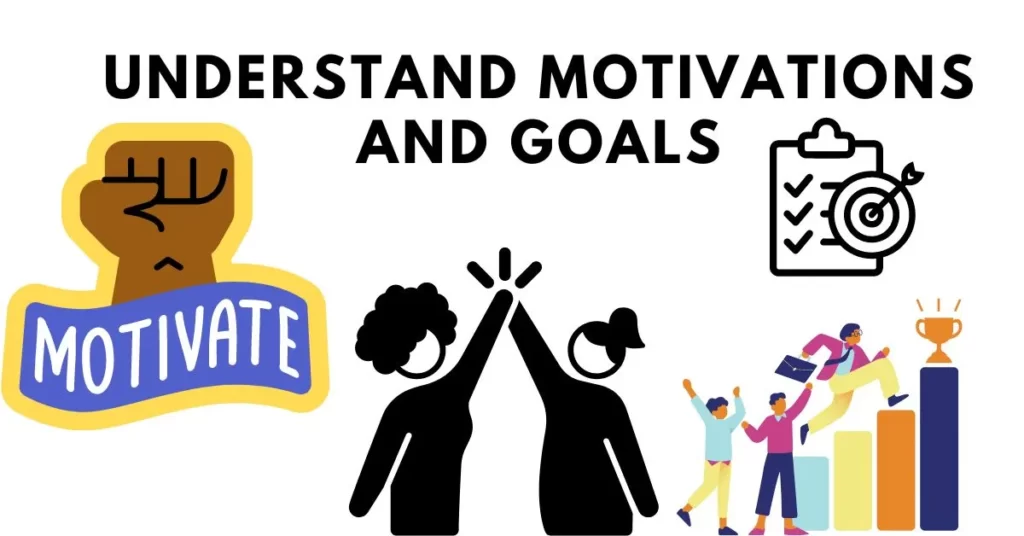
Conducting Keyword Research
Discover the words and phrases your audience uses when searching for information. Keyword research tools help you uncover relevant topics, gauge search volume, and understand user intent, ensuring your content aligns with what people are looking for.
Analyzing Competitor Content
Study your competitors’ content strategies to gain insights into what works in your industry. Identify gaps or areas where you can provide a unique perspective or valuable information to stand out from the crowd.
Creating a Content Calendar
Organize your content creation efforts by developing a calendar. This allows you to plan topics, set deadlines, and maintain a consistent publishing schedule. A content calendar keeps you on track and ensures a steady stream of helpful content.
By investing time in research and planning, you position yourself to create content that directly addresses the needs and interests of your audience. It sets the stage for a successful content creation journey, allowing you to deliver valuable and relevant information that truly helps your readers.
Identifying Pain Points and Needs
To make the process more effective and unique, you can employ the following approaches:
Empathetic Listening
Instead of simply listening to your audience, practice empathetic listening. This involves not only hearing their concerns but also truly understanding and empathizing with their experiences.
It requires active engagement, patience, and the ability to put yourself in your customers’ shoes. By demonstrating genuine empathy, you can establish stronger connections with your audience and uncover deeper insights into their pain points and needs.
Advanced Social Listening
While social listening tools are valuable, you can enhance their effectiveness by utilizing advanced features and technologies. Look for tools that offer sentiment analysis, topic clustering, and audience segmentation capabilities.
These features allow you to delve deeper into the emotions, themes, and specific segments of your audience that are discussing your brand or industry. By gaining a more nuanced understanding of these conversations, you can identify unique pain points and needs that may have otherwise gone unnoticed.
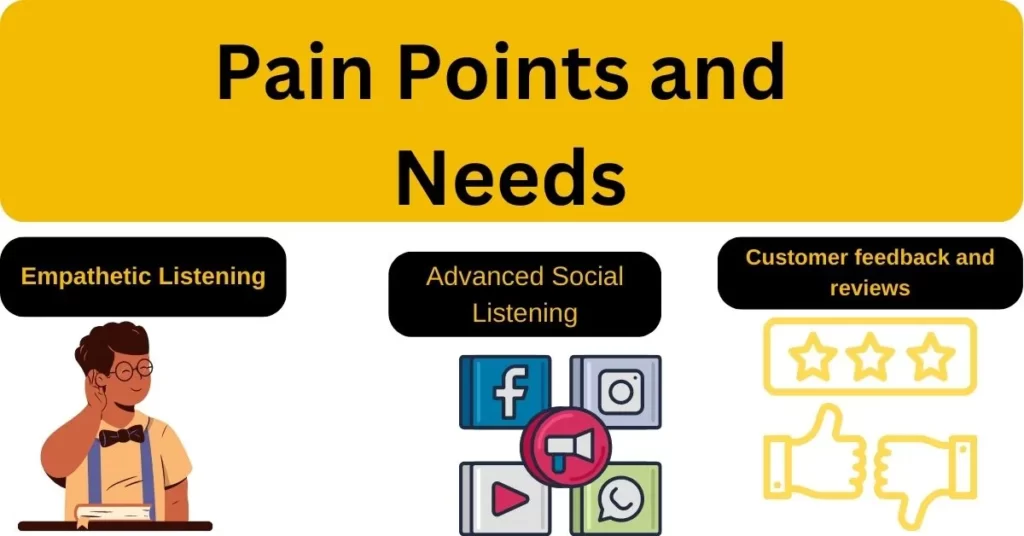
Proactive Feedback Generation
Instead of relying solely on customer feedback and reviews that are spontaneously provided, take a proactive approach to generate feedback. Implement methods such as conducting regular customer surveys, hosting user testing sessions, or organizing customer advisory boards.
By actively seeking feedback, you can elicit specific pain points and needs from your audience. This approach allows you to gather insights on targeted aspects of your business and ensures that you receive feedback from a diverse range of customers.
Data Mining and Natural Language Processing
To extract more meaningful insights from customer feedback and reviews, leverage data mining and natural language processing techniques. These approaches involve analyzing large datasets using algorithms and machine learning models.
By applying these techniques, you can identify patterns, extract key themes, and uncover underlying sentiments more systematically and efficiently. This enables you to discover unique pain points and needs that may not be immediately apparent from individual feedback.
Making Content Easy to Consume
Writing in a clear and concise manner
To make your content easy to consume, it’s essential to write clearly and concisely. Use simple language, avoid jargon or complex terminology, and get straight to the point. Break down complex ideas into easily understandable concepts.
By straightforwardly presenting information, you enhance readability and ensure that your audience can grasp the main points quickly.
Using headings, subheadings, and bullet points
Organizing your content with headings, subheadings, and bullet points helps to improve readability and comprehension. Headings and subheadings create a logical structure, allowing readers to scan through the content and locate information relevant to their needs.
Bullet points are effective for presenting lists or key points succinctly. This formatting approach makes your content visually appealing and enables readers to digest information in a more structured and efficient manner.
Incorporating visual elements (images, infographics, videos)
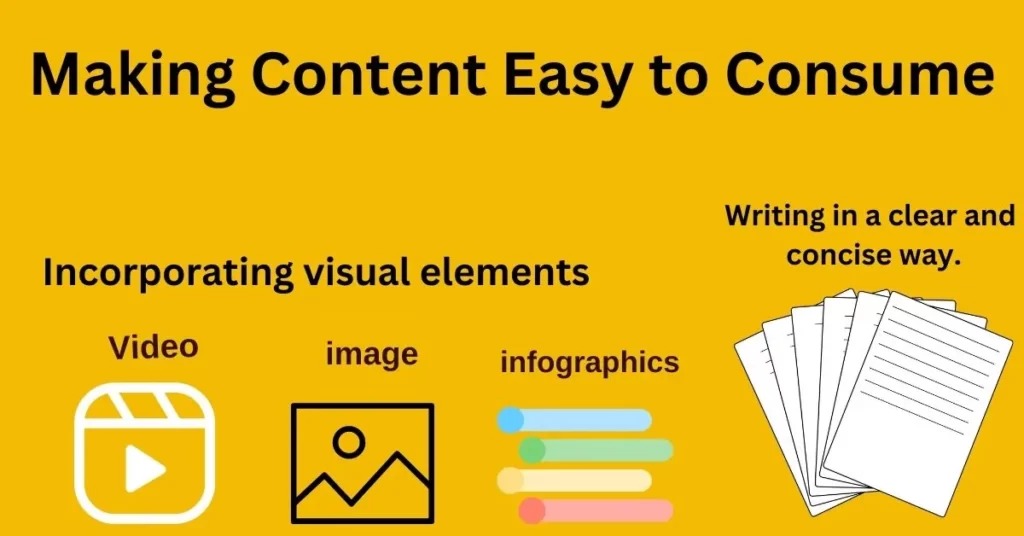
Visual elements are powerful tools for enhancing content consumption. Including relevant images, infographics, and videos can help illustrate concepts, break up text, and engage your audience. Visuals have the advantage of conveying information quickly and effectively.
They also appeal to different learning styles and can make complex information more accessible and memorable. However, it’s important to ensure that the visual elements are relevant, high-quality, and support the overall message of your content.
By implementing these strategies—writing clearly and concisely, using headings and bullet points, and incorporating visual elements—you can make your content more user-friendly and easily consumable. This approach improves comprehension, engagement, and the overall user experience, resulting in increased interest and retention of your content by your target audience.
Personalization and Authenticity
Using storytelling techniques
Storytelling is a powerful way to personalize your content and make it more authentic. By incorporating storytelling techniques, you can engage your audience on an emotional level. Craft narratives that resonate with your target audience, sharing relatable experiences, challenges, and successes. This approach humanizes your brand and builds trust with your audience.
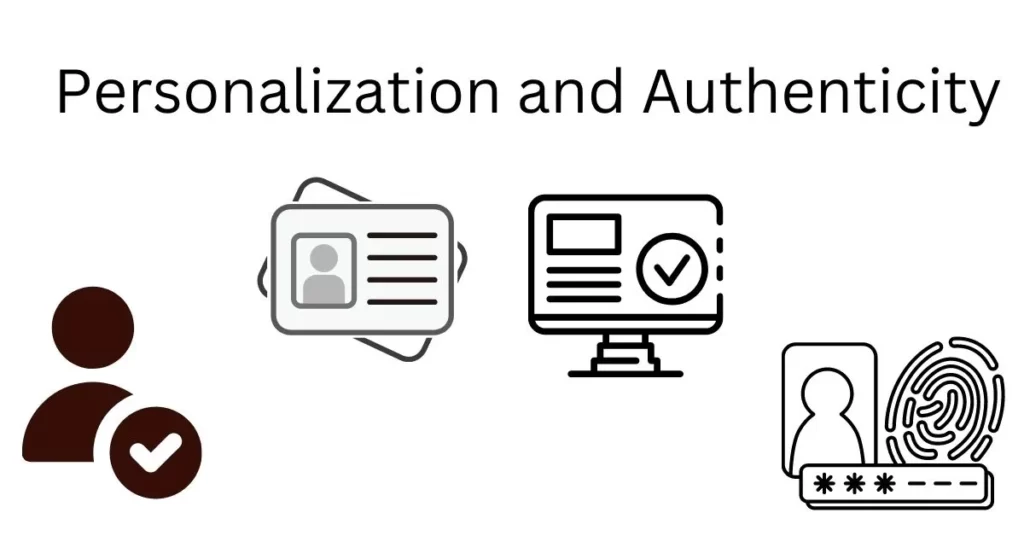
Sharing personal experiences and anecdotes
Sharing your own experiences and anecdotes adds a genuine touch to your content. By revealing personal stories related to your industry or topic, you create an authentic connection with your audience. It demonstrates your expertise and firsthand understanding of the subject matter, helping to build trust and credibility.
Incorporating user-generated content and testimonials
Including user-generated content and testimonials adds authenticity to your content. This can include customer reviews, social media posts, or success stories shared by your customers. Showcasing real experiences and opinions provides social proof and validates the value of your products or services.
Testimonials, whether written or in video format, are particularly impactful in demonstrating the positive impact your offerings have had on real people.
By incorporating these personalization and authenticity strategies—using storytelling techniques, sharing personal experiences and anecdotes, and incorporating user-generated content and testimonials—you can create more informative and relatable content. This approach strengthens your brand’s credibility, increases engagement, and fosters loyalty among your audience.
Optimizing Content for Search Engines

Incorporating Relevant Keywords
To optimize your content effectively for search engines, it’s crucial to incorporate relevant keywords strategically. Begin by conducting thorough research to identify the keywords that align with your content’s topic and your target audience’s search intent.
Integrate these keywords naturally throughout your text, including in headings, subheadings, and body paragraphs. However, avoid keyword stuffing, as it can harm readability and search engine rankings. Aim for a balanced and organic use of keywords that enhance the overall quality and relevance of your content.
Writing Compelling Meta Titles and Descriptions
Crafting compelling meta titles and descriptions is essential for improving search engine optimization (SEO) and attracting users to click on your content. Focus on creating unique, concise, and informative meta tags that accurately summarize the content and entice readers.
Incorporate relevant keywords in a natural and meaningful way to increase visibility and alignment with search queries. However, prioritize user engagement by emphasizing the value your content offers. Make sure to adhere to recommended character limits for meta titles and descriptions.
Optimizing Content Structure and Formatting
Optimizing the structure and formatting of your content significantly enhances its visibility and user experience. Arrange your content into logical sections with clear headings and subheadings to improve readability and facilitate search engine understanding. Properly utilize HTML tags, such as H1, H2, and H3, to indicate the hierarchy and importance of your headings.
In addition, optimize the formatting of your content by utilizing bullet points, numbered lists, and shorter paragraphs. This improves readability and allows users to consume information more easily.
Break down lengthy blocks of text into smaller, digestible chunks. Incorporate relevant multimedia elements, like images, videos, and infographics, to enrich your content and increase user engagement.
Don’t forget to optimize your images by providing descriptive alt tags that include relevant keywords. This helps search engines comprehend the image content and can boost visibility in image search results.
By implementing these effective optimization techniques, you can enhance the visibility, relevance, and overall user experience of your content. This, in turn, will improve search engine rankings and drive higher organic traffic to your website.
Encouraging User Engagement
Including Calls-to-Action (CTAs)
To engage users effectively, include clear and compelling calls-to-action (CTAs) in your content. These prompts encourage users to take specific actions, such as subscribing, downloading, or purchasing.
Place CTAs strategically, making them visually prominent and aligned with the user’s journey. Use persuasive language to motivate users and create a sense of urgency or exclusivity. Ensure that your CTAs are easy to interact with on all devices.
Encouraging Comments and Discussions

Foster a sense of community by encouraging comments and discussions from your audience. Invite them to share their thoughts, ask questions, or provide feedback.
Pose open-ended questions or present controversial viewpoints to spark meaningful conversations. Respond promptly and thoughtfully to comments, showing your engagement and willingness to connect. This builds trust, encourages return visits, and cultivates a loyal community.
Responding to User Feedback and Inquiries
Actively respond to user feedback and inquiries to foster engagement. Encourage feedback through surveys, forms, or social media. Respond promptly and courteously to both positive and negative feedback, addressing concerns or issues raised.
By valuing user feedback, you show that you care about their opinions and are committed to improving. Promptly responding to inquiries demonstrates accessibility and attentiveness, enhancing engagement and satisfaction.
By implementing these simple yet effective strategies, you can create a unique and engaging environment around your content. This fosters a stronger connection with your audience, encourages meaningful interactions, and increases conversions.
Measuring and Analyzing Performance
Tracking Key Metrics (Traffic, Engagement, Conversions)
Tracking key metrics is essential for evaluating the performance of your website, application, or marketing campaigns. By monitoring these metrics, you can gain valuable insights into the effectiveness of your efforts and make informed decisions for improvement.
Traffic
Monitoring website traffic helps you understand the number of visitors and their behavior on your site. Key metrics to track include total visits, unique visitors, page views, and bounce rate. Analyzing traffic patterns can identify popular pages, referral sources, and areas for improvement.
Engagement
Measuring user engagement indicates how visitors interact with your content. Metrics like time on page, average session duration, and click-through rates provide insights into the quality and relevance of your content. High engagement suggests that visitors find your content valuable and are more likely to convert.

Conversions
Conversions measure the desired actions taken by users, such as making a purchase, subscribing to a newsletter, or completing a form. Tracking conversion rates allows you to evaluate the effectiveness of your marketing strategies and optimize conversion funnels. Key conversion metrics include conversion rate, average order value, and lead generation rate.
Utilizing Analytics Tools
To effectively track and analyze metrics, you need the right analytics tools. Here are some commonly used tools:
Google Analytics
A popular and powerful web analytics tool that provides comprehensive insights into website traffic, user behavior, and conversions. It offers customizable reports, goal tracking, and integrations with other platforms.
Social Media Analytics
Platforms like Facebook Insights, Twitter Analytics, and LinkedIn Analytics offer data on audience demographics, engagement, reach, and post-performance. These tools help you understand how your social media efforts are driving traffic and engagement.
Heatmap Tools
Heatmap tools like Hotjar or Crazy Egg visualize user behavior on your website, highlighting areas of high engagement, clicks, and scroll depth. Heatmaps can reveal user preferences, usability issues, and opportunities for optimization.
Making Data-Driven Improvements
Once you have gathered and analyzed data, it’s crucial to use those insights to make data-driven improvements:
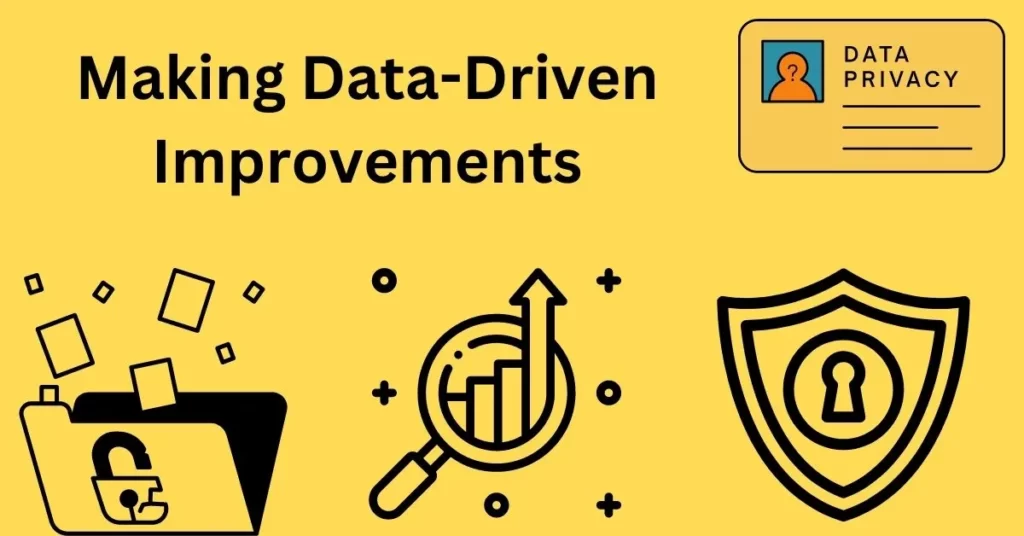
Identify trends and patterns
Look for recurring patterns and trends in the data. This could be specific pages that attract the most traffic, keywords with high conversion rates, or time periods with increased engagement. Identify what’s working and replicate those strategies.
Address weaknesses
Identify areas where you are underperforming or experiencing high bounce rates. Analyze user behavior, exit pages, and conversion funnels to find weaknesses. Make data-backed improvements like improving website speed, optimizing landing pages, or enhancing user experience.
Test and iterate
Use A/B testing or multivariate testing to experiment with different variations of your content, designs, or marketing strategies. Test small changes and measure their impact on key metrics. Continuously iterate and optimize based on the results.
Set goals and track progress
Define specific, measurable goals based on your key metrics. Regularly track your progress and make adjustments to stay on track. This iterative process ensures continuous improvement and maximizes your chances of success.
By consistently tracking key metrics, utilizing analytics tools, and making data-driven improvements, you can optimize your performance and achieve better results in your online endeavors.
Conclusion on How do you create helpful content?
In conclusion, creating helpful content requires a combination of informative, simple, and unique elements. By understanding the audience, conducting thorough research, and providing clear communication, creators can deliver valuable information in a way that is easily understood.
By offering actionable advice, engaging visuals, and addressing common pain points, content becomes truly helpful and relatable. Regular updates and encouraging feedback ensure the content remains relevant and interactive.
By following these principles, creators can generate content that stands out, captivates the audience, and genuinely assists them in achieving their goals.

